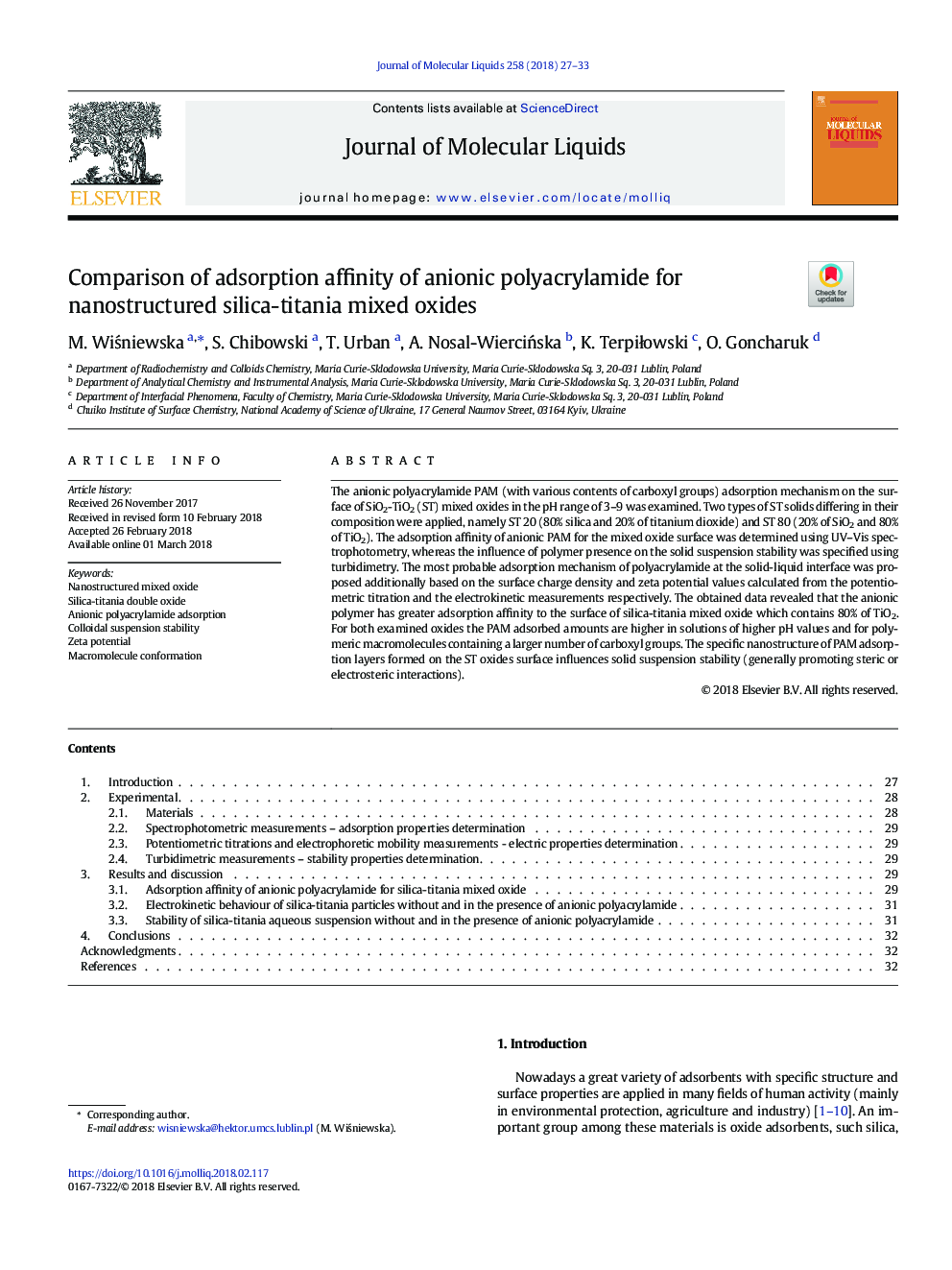| Article ID | Journal | Published Year | Pages | File Type |
|---|---|---|---|---|
| 7842578 | Journal of Molecular Liquids | 2018 | 7 Pages |
Abstract
The anionic polyacrylamide PAM (with various contents of carboxyl groups) adsorption mechanism on the surface of SiO2-TiO2 (ST) mixed oxides in the pH range of 3-9 was examined. Two types of ST solids differing in their composition were applied, namely ST 20 (80% silica and 20% of titanium dioxide) and ST 80 (20% of SiO2 and 80% of TiO2). The adsorption affinity of anionic PAM for the mixed oxide surface was determined using UV-Vis spectrophotometry, whereas the influence of polymer presence on the solid suspension stability was specified using turbidimetry. The most probable adsorption mechanism of polyacrylamide at the solid-liquid interface was proposed additionally based on the surface charge density and zeta potential values calculated from the potentiometric titration and the electrokinetic measurements respectively. The obtained data revealed that the anionic polymer has greater adsorption affinity to the surface of silica-titania mixed oxide which contains 80% of TiO2. For both examined oxides the PAM adsorbed amounts are higher in solutions of higher pH values and for polymeric macromolecules containing a larger number of carboxyl groups. The specific nanostructure of PAM adsorption layers formed on the ST oxides surface influences solid suspension stability (generally promoting steric or electrosteric interactions).
Related Topics
Physical Sciences and Engineering
Chemistry
Physical and Theoretical Chemistry
Authors
M. WiÅniewska, S. Chibowski, T. Urban, A. Nosal-WierciÅska, K. TerpiÅowski, O. Goncharuk,
